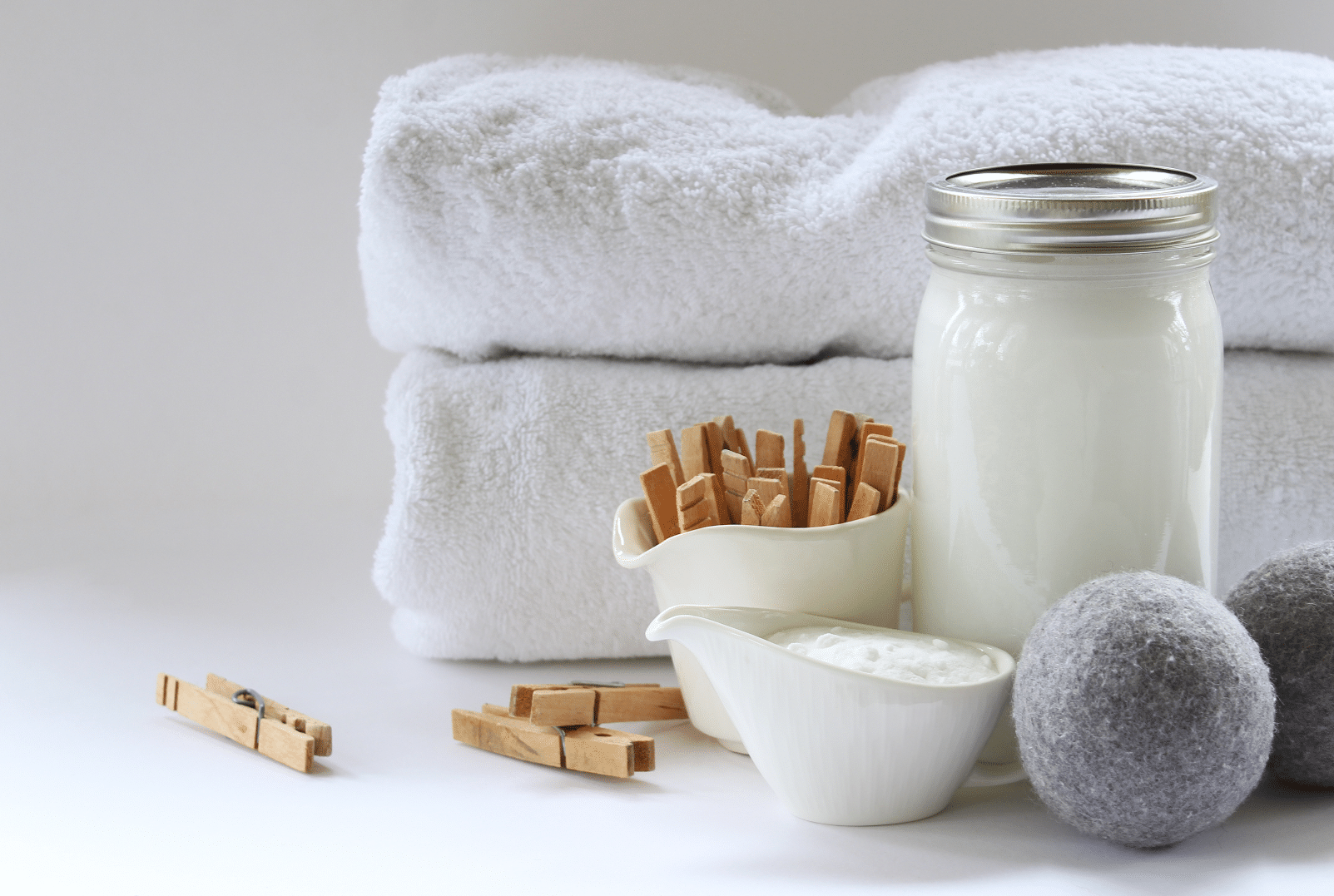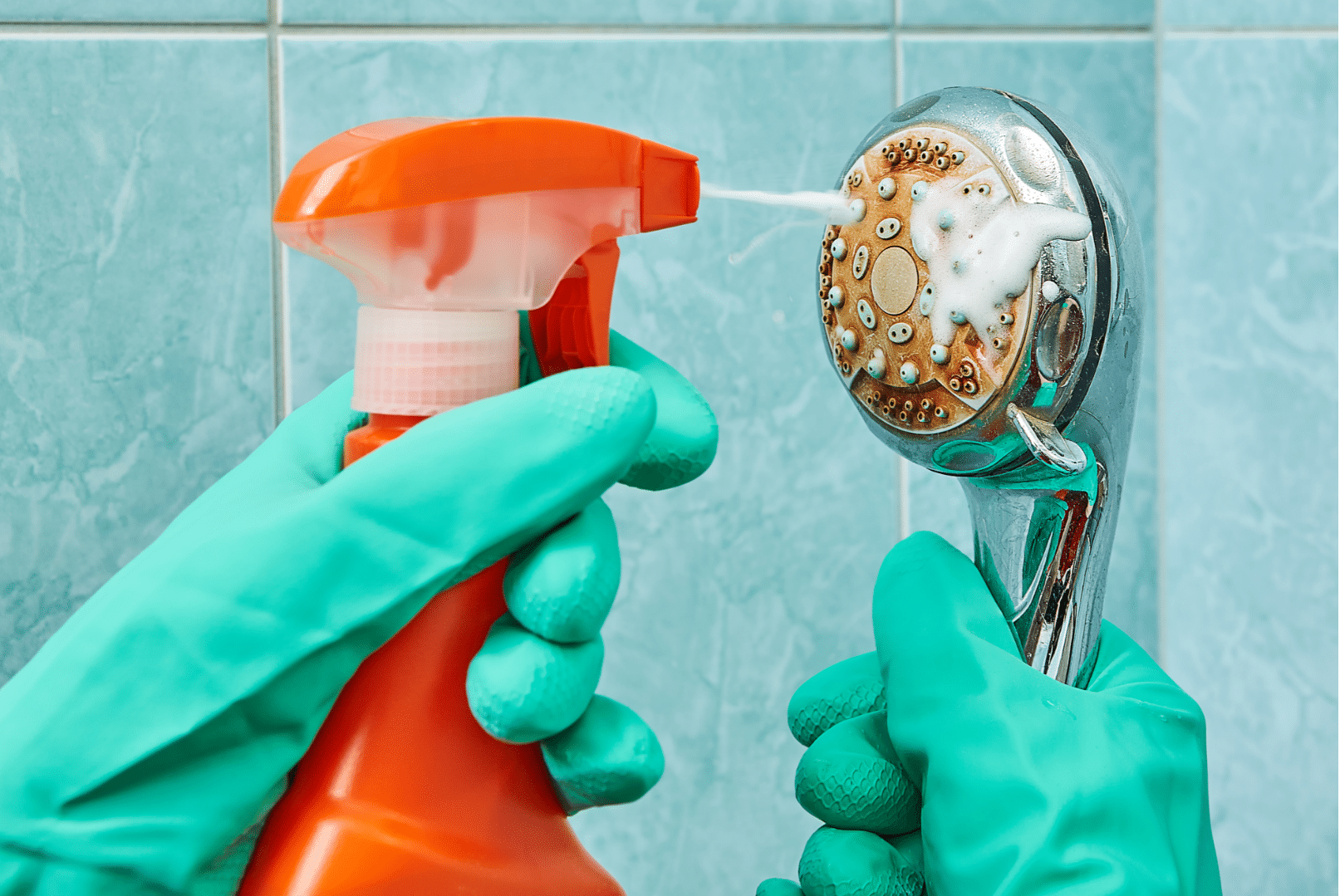Trending: ecofriendly everything.
Are your social media feeds brimming with ads for new products designed to do a better job of cleaning all kinds of specific items with minimal packaging waste? I know mine are. We could all spend a fortune and clutter up our storage spaces with products galore. Seems counterintuitive, doesn’t it?
How about an alternative? It’s nothing new, newfangled, expensive, or “only available on line”. In fact, I’d be willing to bet you have a bottle in your cupboard. Let me reintroduce you to your new local hero: distilled white vinegar.
My admittedly dusty bottle of white vinegar sat in the back of my cabinet unused for ages. Not quite sure why I bought it; it just seemed like one of those must-have pantry staples. But then when I moved into an old (circa 1896) apartment in the historic district of Newport, KY and my bathtub drain ran super slow, Google taught me that white vinegar would keep my drain running clear. More on that later. That Google search opened my eyes to the almost magic trickery of distilled white vinegar which, as it turns out, is a workhorse in the kitchen, bathroom, garden, and more! Bonus: it’s cheap.
Here are just a few of the tricks white vinegar has up its sleeves:
All-Purpose Cleaning Solution. In a spray bottle, combine 1 cup of distilled white vinegar with 3 cups of water and use on just about everything. Don’t love the smell of vinegar? Let vinegar sit in a jar with strips of lemon zest and a spring of fresh thyme for a week or two in a sunny spot, then strain. Mix with water as described above. This can be done with any herb or fragrant plant like lavender or eucalyptus, just avoid anything that colors the vinegar if you plan on using it on a white carpet.
IN THE KITCHEN
Stinky Sink Drain. To keep kitchen drains fresh, pour 1 cup of distilled white vinegar down the drain once a week. Let it sit for 30 minutes and then rinse with cold water. Ahhh, fresh!
Dishwasher. Pour a small amount of white vinegar into the rinse-aid dispenser of your dishwasher. This will help prevent a cloudy residue on your glasses and keep cutlery-free of smears and streaks. And, once a year or so, more often if you have hard water, pour a cup of vinegar into an empty dishwasher and run it on a short cycle to remove lime and soap build-up.
Stainless Steel Cookware. Scrub with a mixture of white vinegar and salt.
Cutting Boards. Undiluted white vinegar cleans and disinfects cutting boards, especially those made of wood.
Microwave. To remove smells or cooked on food, combine ¼ cup of distilled white vinegar and 1 cup of water in a microwave-safe container. A slice of lemon will add a fresh, clean scent. Microwave on high until the mixture comes to a boil and steam forms on the window. Let cool slightly, then wipe away any food residue.
IN THE LAUNDRY
Stain Treatment. For removing stains like mustard, ketchup, tomato sauce, grass, and underarm deodorants, spray a little white vinegar onto the stain before laundering. Soaking whites in vinegar will help bring back their whiteness.
And just like in your dishwasher, vinegar helps to break down detergent when added to the rinse cycle, making clothes fresher, more colorful—and it gets rid of funky towel mildew. One cup should be plenty; add less when using a front-loading washing machine.
WARNING: Never add vinegar when using chlorine bleach; it will create noxious chlorine gas, a potentially deadly compound.
Laundry Softener. If you’ve run out of fabric softener, simply add about three tablespoons (or a scant ¼ cup) to your washing machine dispenser. Your clothing will be softer, but won’t smell like vinegar because of the limited measurement.
IN THE BATHROOM
Window/Mirror/Shower Door Wash. Spray the all-purpose solution on the glass surface and wipe it off with a clean, lint-free cloth or a balled-up piece of newspaper (does anyone still read the newspaper?).
Clean Faucets & Showerheads. White vinegar is effective in removing lime scale especially when mixed with hot water. Wrap your showerhead in a plastic bag of warm, white vinegar and secure it with a rubber band. Let it soak for an hour before rinsing it clean. Spray faucets, let sit for a bit, then wipe clean. If your toilet bowl, bathtub, or sink has lime deposits from hard water, soak or spray vinegar onto the grit. It should loosen the deposits enough to remove them easily.
Tile & Grout. Spray full strength white vinegar on mildewed or scummy grout and tile. Wait for about an hour, and scrub with a soft bathroom scrub brush.
Keep Drains Clear. To keep your sink or bathtub drain running clear, use a funnel to pour a half cup of baking soda down the drain followed by one cup of white vinegar. The concoction will foam up like crazy, so this can be a fun “science experiment” with the kids. Let sit until the foaming action stops, then rinse with hot water (this step should be kid-free). Not only will it clear your slow running drain, but it will also destroy any odor-causing bacteria.
IN OTHER PLACES
Pet Potty Accidents. Clean and refresh the soiled area by spraying vinegar. This may also deter your pet from soiling the same area. Read more in our blog post about cleaning carpet stains here.
Remove Stickers. Who hates price tag stickers?? They are a pet peeve of mine. I especially hate it when a price sticker is placed on the glass of a picture frame or in a very conspicuous place on a pretty vase. Dab white vinegar on the spot and let it sit for a minute or two. Afterward, it will be easy for you to scrape away the excess paper and gunk. And much less expensive than Goo Gone.
Relieve Sunburn Pain. No one ever plans a sun burn, so aloe is usually not close at hand. Instead, soak a washcloth in a 50/50 solution of distilled white vinegar and water and dab on your sunburn. Reapply as the washcloth warms. Or, add 2 cups to your bathwater.
Fresh Flowers. Add a few tablespoons of vinegar to your flower water to make your flowers last longer. When the water gets cloudy, dump it out and repeat.
So there you have it. Well not all of it, because the uses for white vinegar go on and on!
In closing, I’ll mention that vinegar is an acidic liquid originally created from wine gone bad. Wine gone bad is a very, very sad thought until you think of all the easy, effective, and inexpensive things that can be done with it.
Now go buy a gallon. Who doesn’t need a hero right now?
Resources: https://facty.com, www.foodandwine.com, www.thespruce.com







